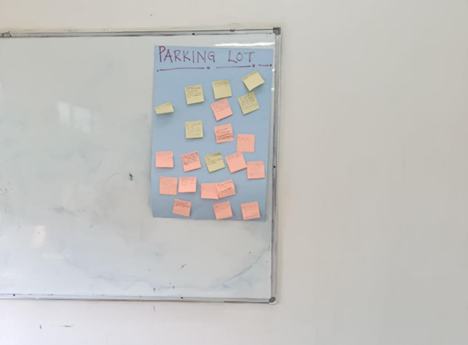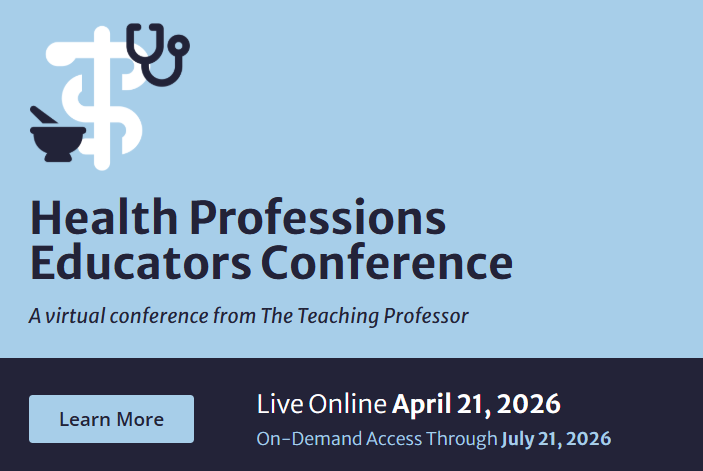When students of different years of study share a common class, their levels of experience and confidence differ. Students from lower years of study may hesitate to speak up in the presence of those in higher years, while more experienced students may contribute more freely. These dynamics are common and, if left unaddressed, can reinforce a power imbalance that discourages active learning.
The same challenge shows up at the start of a semester. When students meet a lecturer for the first time, the unfamiliarity often makes them cautious. Most hold back. It is not because they lack curiosity, but because they are unsure how their answers or questions will be received.
This hesitation can hold back meaningful participation. I have come to learn that all it takes is a simple, intentional tool to change the energy of a room and give every student the confidence to contribute.
One such tool that has had a lasting impact on my teaching is the “Parking Lot.”
Discovering the Parking Lot
The Parking Lot is a simple but powerful active-learning tool: a dedicated space, physical or digital, where students can “park” their questions, comments, or reflections for later discussion. This allows a session to keep its flow while assuring students that their contributions will be acknowledged.
I first encountered this tool during a two week professional development course on Competency-Based Education and Training (CBET) delivery organized by my university.
I left the training with many ideas for making my teaching more interactive, but the Parking Lot stayed with me as a practical, low-cost strategy I could implement immediately.
A few months later, in early September 2025, I have the privilege of leading an inaugural 40-Hour Mediation Training and Certification program, a capacity-building initiative for students and staff members.
As project lead, I handled admissions and could tell from the applications that we had a mix of students from different years and one staff member. I worried that students from lower years might hold back and that quieter voices might be lost. I wanted every participant to feel their questions, comments, and opinions mattered.
During the pre-training meeting, I asked the trainers if I could introduce the Parking Lot as a way to encourage engagement, and they graciously agreed.
Bringing the Parking Lot to Life
On the first day of the training, I wrote PARKING LOT on a manila sheet, taped it to the front wall near the exit, and placed sticky notes on each participant’s table. The trainers invited me to explain how it worked.

I explained the purpose of the parking lot and encouraged participants to write their questions on sticky notes at any point in the day, during sessions, breaks, or even early the next morning, if they were not ready to raise their hand.
The results were immediate and encouraging. By the end of the first day, the Parking Lot had several notes posted. The trainers reviewed and addressed them the following morning, and participants continued to engage with it throughout the week.
Some who started by writing anonymous notes eventually became confident enough to ask questions aloud. The trainers later confirmed that the Parking Lot had improved participation and enriched the discussions.
This success made me curious to see what would happen if I tried it in my regular semester classes, which were about to begin the following week.
Applying the Parking Lot in My Classes
It was my first class of the semester, and I wanted to set the tone for participation. I was teaching a fourth year second semester class on Alternative dispute Resolution.
This time, I didn’t use the Parking Lot just to collect questions — I used it to invite feedback and spark discussion.
The first question I asked was “What rules should govern our class this semester?” Students wrote their suggestions on sticky notes, and we created a “social contract” for the semester, another active learning technique I am experimenting with.
I read the suggestions aloud and asked students, “What does this rule mean for us as a class?” or “How might we apply this rule in practice?” Their answers led to rich discussion, and I saw the power of shared responsibility as play when we agreed on the class rules, their application and consequences for both the students and the teacher.
I then used the Parking Lot to ask questions to introduce the course I was teaching that semester: “What do you think is conflict?”, “What do you think is a dispute?”, “What is the difference?” Reading their answers helped me identify and gently correct misconceptions without putting anyone on the spot. The class became so interactive that students were surprised when time was up.
Motivated by the positive results, later that same day, I used the Parking Lot in my first-year, second-semester on Legal Research & Writing class.
I asked students to write down on the sticky notes why they chose to study law and what they hoped to do with their degree. I told them that their reasons could serve as a compass something to help them find direction, stay true to their path, and never lose sight of their reason for being in law school when the journey becomes challenging.
I read their answers aloud, offered encouragement, and connected their aspirations back to the course outcomes. For example, I reminded them that to become a defender of human rights, one must not only know how to find the correct law but also be capable of writing clearly and persuasively.
This exercise gave even the quietest students a voice and set a tone of openness and shared purpose for the rest of the semester.
Lessons Learned
In the three instances I have applied the Parking Lot with different groups of students, I have seen it:
- Activate students’ thinking early as they process the material and reflect on what they are learning.
- Open up discussion by creating a safe space where every student’s voice can be heard.
- Reveal misconceptions and allow them to be addressed gently, without putting anyone on the spot.
- Connect student contributions to learning outcomes, helping them see why what they wrote matters to the course.
- Encourage students to take ownership of their learning, which builds confidence and keeps them engaged.
- Create opportunities for mentorship, by affirming students’ ideas, encouraging them, and guiding them as they think about their future career paths.
Reflection
This experience brought me to the realization that innovation in teaching, even in public universities where resources are often limited, does not need complicated technology or big budgets.
A manila paper sheet, some sticky notes, and a willingness to listen can transform the classroom.
Most of all, this experience affirmed why I teach: to create spaces where every student, confident or quiet, can grow.
Seeing students engaged, sharing openly, and losing track of time because they are so absorbed in the conversation is one of the most rewarding experiences I can have as an educator.
What You Can Do Tomorrow
Bring a manila sheet and sticky notes to class, tape the sheet where students can see it as they leave, and invite them to post their questions, answers or reflections.
Review and address a few notes immediately or at the start of the next class. You may be surprised how quickly even the quietest students start to contribute.
J. Muthoni Mwangi, LL.B, PGDip Law, LL.M, is an Assistant Lecturer at JKUAT School of Law – Karen Campus, an Advocate of the High Court of Kenya, an Associate Member of CIArb, and an Accredited Mediator with SDRC. She served as Project Lead for the inaugural JKUAT 40-Hour Mediation Training & Certification and is passionate about learner-cantered legal education, mentoring the next generation of mediators, and promoting access to justice.






